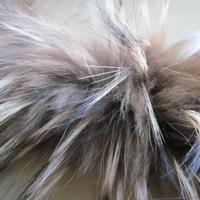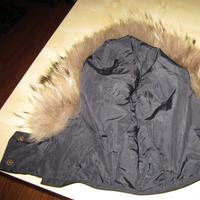The Strategy of the Fur Industry
Why do so many people still - and again! - buy fur? Don't they know about the atrocities?
Well... The sad answer is this: The fur industry is ingenious in manipulating the unsuspecting customers, systematicly infusing them with desinformation and building false fronts.

In overriding the conscience of their customers, the fur industry pursues two seemingly contradictory routes.
Fur - the Exquisite
On the one hand, the fur industry suggests that beauty, elegance and elitism emanate from fur. "Wearing fur makes you special" - that's the message. The potential customer is made believe that by wearing fur, she distinguishes herself from the profane and is enabled to indulge in the luxury of the exceptional.
When fur is thus explicitly promoted as such, the customer's conscience is furthermore assuaged by asserting that fur is an ecological material. The fur industry pretends that pelts are taken from animals that need to be "regulated" or "managed" anyway. Hence, buying fur allegedly furthers ecological wellbeing. This is nonsense, of course, but it greatly helps to maintain the assertion of literal and symbolic warmth, harmony and patronage associated to wearing fur fashion.

Fur fashion thus advertised usually is very expensive, ranging from exquisite fur coats to jackets with opulent fur collars to luxurious blankets, scarfs intricately woven from fur straps, bags, earrings... and further lovely looking accessoiry.
This strategy is easy to see through and can be straightforwardly tackeled by anti-fur activists. All you have to do is clear up with the lies and educate those people who deliberately look for buying fur.
Fur - the Norm
On the other hand, in recent years, the fur industry embarked on a much more subtle and much more dangerous strategy. They try to market fur fashion as mass products to ignorant walk-in customers.

Retailers following this strategy do not promote fur as fur, but plant inconspicious fur trimmings on unsuspecting shoppers. They offer fur as the fancy "ice on the cake", as decorative collars, stocking-caps or scarfs, as lining in shoes, vests or a pompon at the smartphone bag. Thus, they tacitly introduce fur as an ever-day material, something everyone has - and hence: accepts.
This stategy builds on psychological and sociological research. If you inadvertently happen to wear fur, you are likely to consent to wearing it again deliberately. Also, with fashion magazines abounding with models and starlets happily and all naturally wearing the items that are readily available for purchase in stores - a forceful fashion trend is set. What Miley Cyrus wears is "in", isn't it?
Fur fashion promoded through this strategy is cheap. Stunningly cheap. Sometimes, it is even not labelled as real fur and many shoppers unsuspectingly think that something as cheap can't seriously be real fur. Thus billions and billions of fur items are sold and the profits of the fur industry skyroket. This strategy is very difficult to tackle by anti-fur activists. It is simply impossible to educate all its potential victims. As most of them are not explicitly aiming at buying fur, they are fully unaware of the danger and oftentimes don't realize it until it is too late.

These are the fur industrie's routes to success: financial gain on the expense of the animals and their credulous customers. None of them could not support the dire truth behind fur fasion, but they are duped into believing it's alright.
This is why they need you. Help spreading the word about that truth and prevent your friends and family from making a purchase they'll regret.

